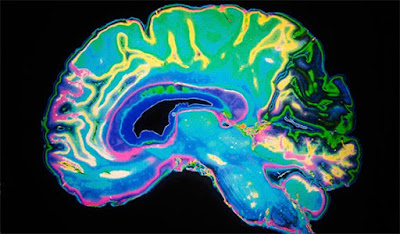Week 2: Math and Art
Professor Vesna's video lecture was very interesting to me because prior to taking an art class in highs school, I did not associate Math with Art. Professor Vesna stated math is the study of relationships between numbers and I never thought it could relate to art. Once I took the art class I realized just how much art and math are related and the necessity of math to create a simple piece of artwork. We use math for art all around the world today and can even trace is back thousands of years ago. I now realize how important it is to have correct measurements and spacing and direction of lines to make things realistic.
http://img1-azcdn.newser.com/image/1062438-12-20160325131304.jpeg
In the video Lecture Professor Vesna explains Leonardo Da Vinci's impact on art and his use of linear perspective to create realistic paintings. In "The Last Supper", Da Vinci uses linear perspective by making the vanishing point of the painting in the middle of Christ's head. Vanishing point is the point at which receding parallel lines viewed in perspective appear to converge, which in this picture makes the audience look at Christ because he is the focus of this painting.
http://www.the-art-minute.com/wp-content/uploads/2012/09/David_von_Michelangelo.jpg
The " David" statue is another good example of using mathematics to create pieces. Michelangelo used math to create symmetry on the body along with using it to translate human measurements to the statues measurements since the statue is around 17 feet tall and the average human male height is 5 feet 6 inches.
http://www2.rgu.ac.uk/subj/ats/teachingweb/teaching/t26-DesignPrinciples/TheGoldenSection/Parthenon.jpg
ProffesoreVesna talked about the "Golden ratio" and how the Greeks used it to created strong, structurally sound buildings that also looked nice, like the Parthenon. "The Fourth Dimension" explains how there could be a new fourth dimension in the future with more integration and mathematics and art. The parthenon was created by using straight lines and the Golden ratio to make it pleasurable to look at while also strong. To me, it seems like it worked because the Parthenon is still very famous today and its foundation is still standing.
WC: 338
Works cited:
Henderson, Linda. “The Fourth Dimension and Non-Euclidean Geometry in Modern Art: Conclusion.” MIT Press. 17.3 (1984): 205-10. Print.
http://www2.rgu.ac.uk/subj/ats/teachingweb/teaching/t26-DesignPrinciples/TheGoldenSection/Parthenon.jpg
http://img1-azcdn.newser.com/image/1062438-12-20160325131304.jpeg
In the video Lecture Professor Vesna explains Leonardo Da Vinci's impact on art and his use of linear perspective to create realistic paintings. In "The Last Supper", Da Vinci uses linear perspective by making the vanishing point of the painting in the middle of Christ's head. Vanishing point is the point at which receding parallel lines viewed in perspective appear to converge, which in this picture makes the audience look at Christ because he is the focus of this painting.
The " David" statue is another good example of using mathematics to create pieces. Michelangelo used math to create symmetry on the body along with using it to translate human measurements to the statues measurements since the statue is around 17 feet tall and the average human male height is 5 feet 6 inches.
http://www2.rgu.ac.uk/subj/ats/teachingweb/teaching/t26-DesignPrinciples/TheGoldenSection/Parthenon.jpg
ProffesoreVesna talked about the "Golden ratio" and how the Greeks used it to created strong, structurally sound buildings that also looked nice, like the Parthenon. "The Fourth Dimension" explains how there could be a new fourth dimension in the future with more integration and mathematics and art. The parthenon was created by using straight lines and the Golden ratio to make it pleasurable to look at while also strong. To me, it seems like it worked because the Parthenon is still very famous today and its foundation is still standing.
WC: 338
Works cited:
Henderson, Linda. “The Fourth Dimension and Non-Euclidean Geometry in Modern Art: Conclusion.” MIT Press. 17.3 (1984): 205-10. Print.
http://www2.rgu.ac.uk/subj/ats/teachingweb/teaching/t26-DesignPrinciples/TheGoldenSection/Parthenon.jpg
http://www.the-art-minute.com/wp-content/uploads/2012/09/David_von_Michelangelo.jpg
http://img1-azcdn.newser.com/image/1062438-12-20160325131304.jpeg
Vesna, Victoria. “Mathematics-pt1-ZeroPerspectiveGoldenMean.mov.” Cole UC online. Youtube, 9 April 2012. Web. 11 Oct. 2012. <http://www.youtube.com/watch?v=mMmq5B1LKDg&feature=player_embedded>





I think "The Last Supper" is the painting that can illustrate how high dimension fulfill in the painting and how to make the painting more realistic. Many artists used this skills to draw. I also agree that we cannot finish a artwork while completely get rid of math. They are related in many ways. Before I was taking math class, I just feel like some paintings, like Mona Lisa, The Last Supper are really vivid. After I know some math, I know that they use some math skills.
ReplyDeleteAaliyah, your post clearly expresses a connection between math and classical art. I think you've found a strong foundation for the connection of these two cultures and have great potential to expand your insights. The points you made can be argued for modern art and performance art forms as well. I would love to see you take this understanding and apply it to other variations of art and science.
ReplyDelete